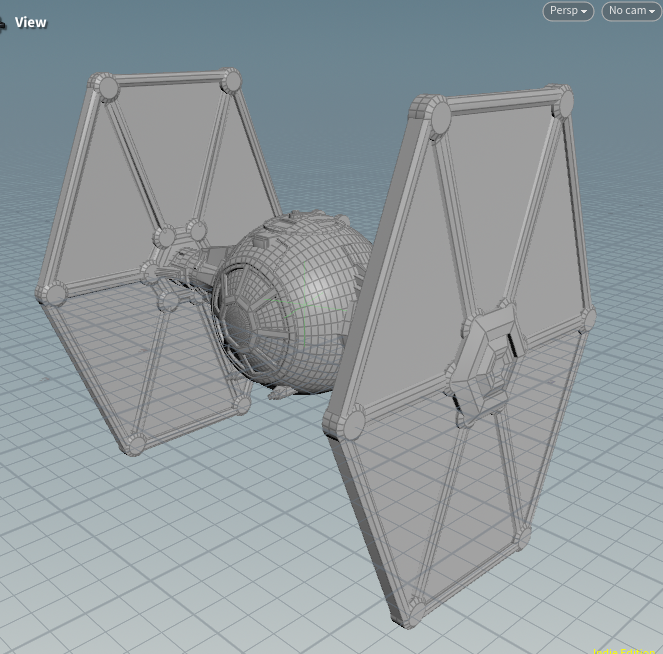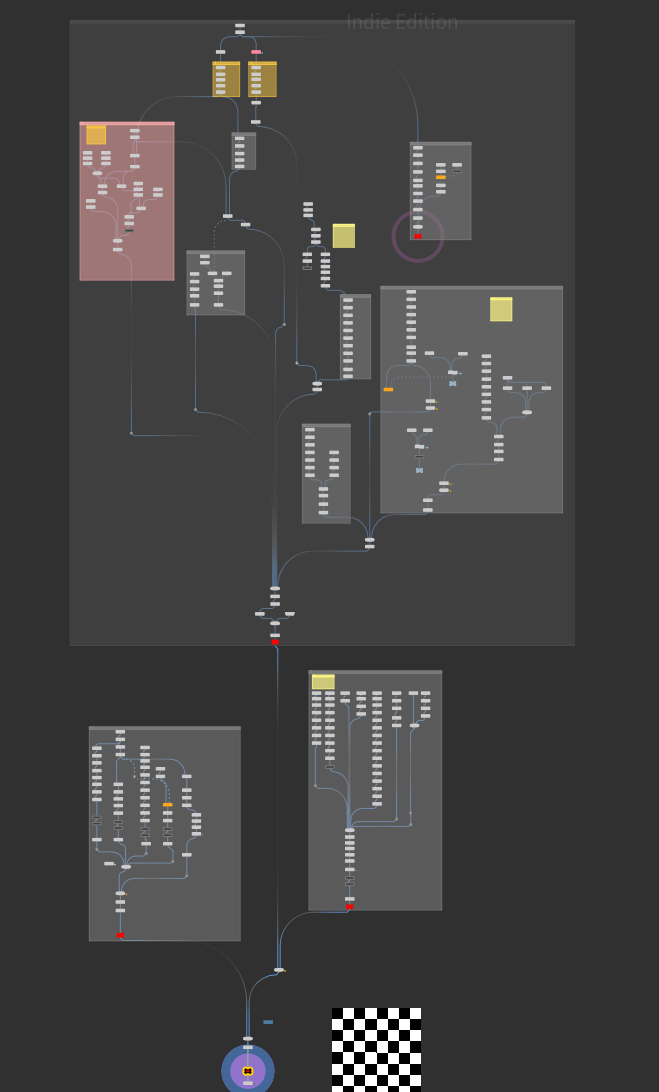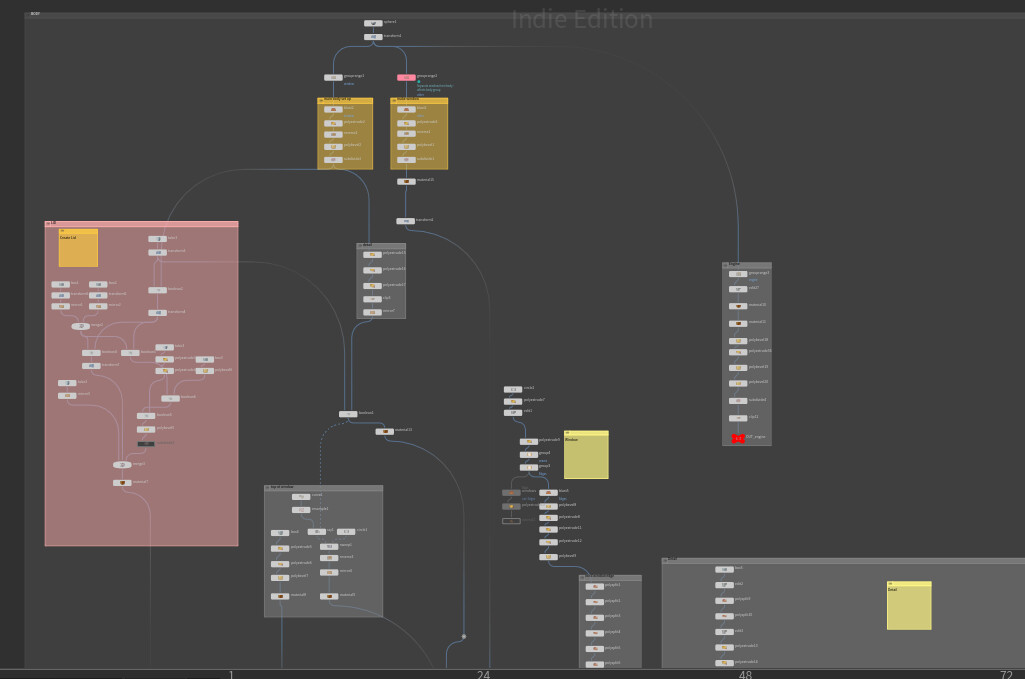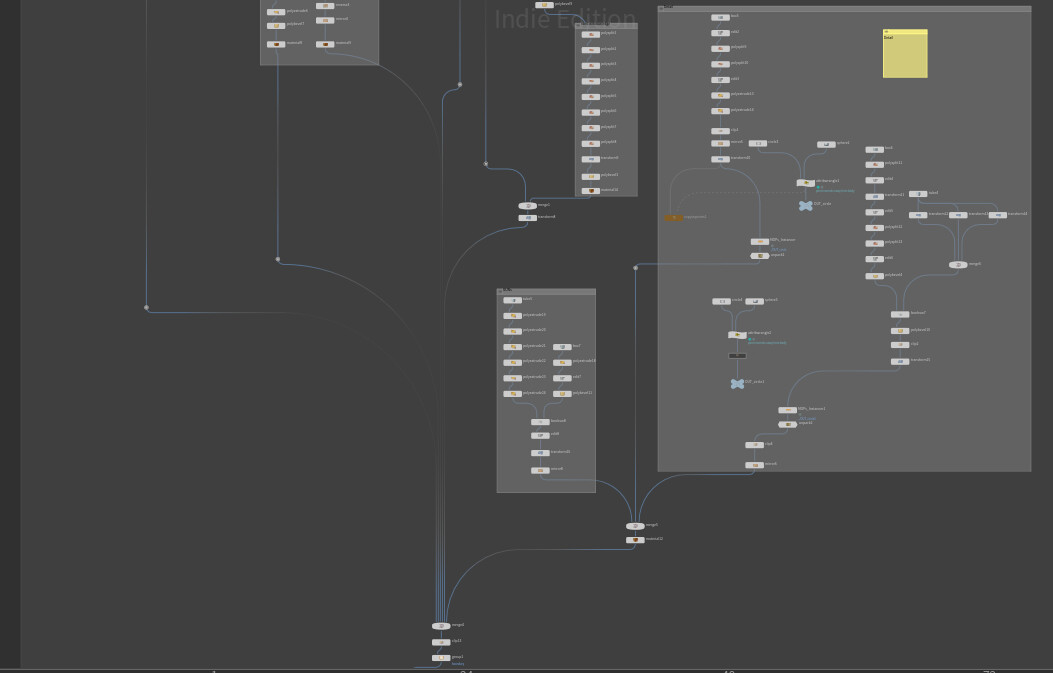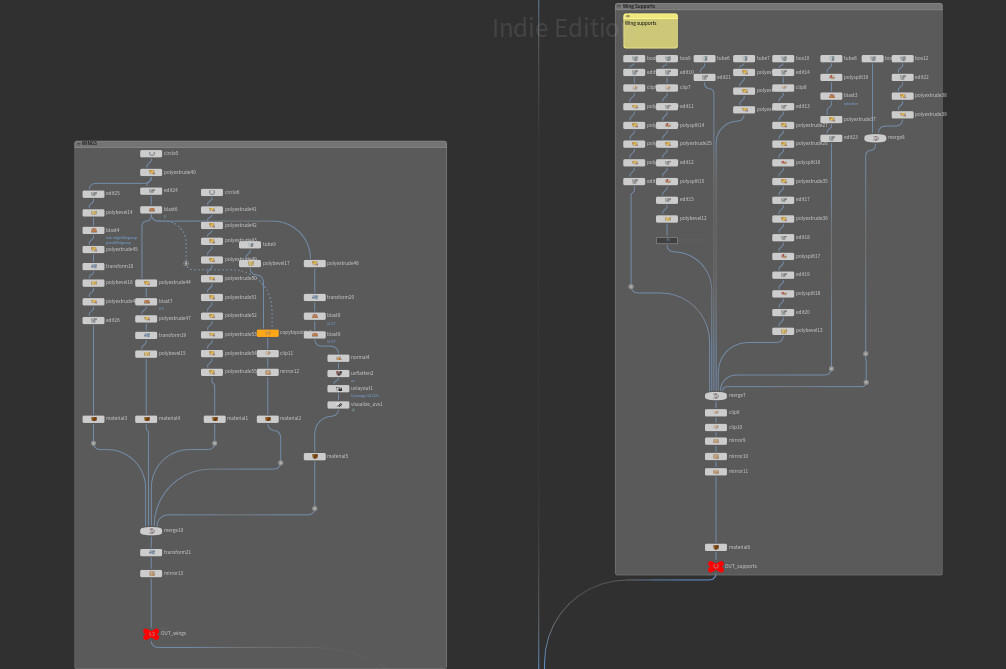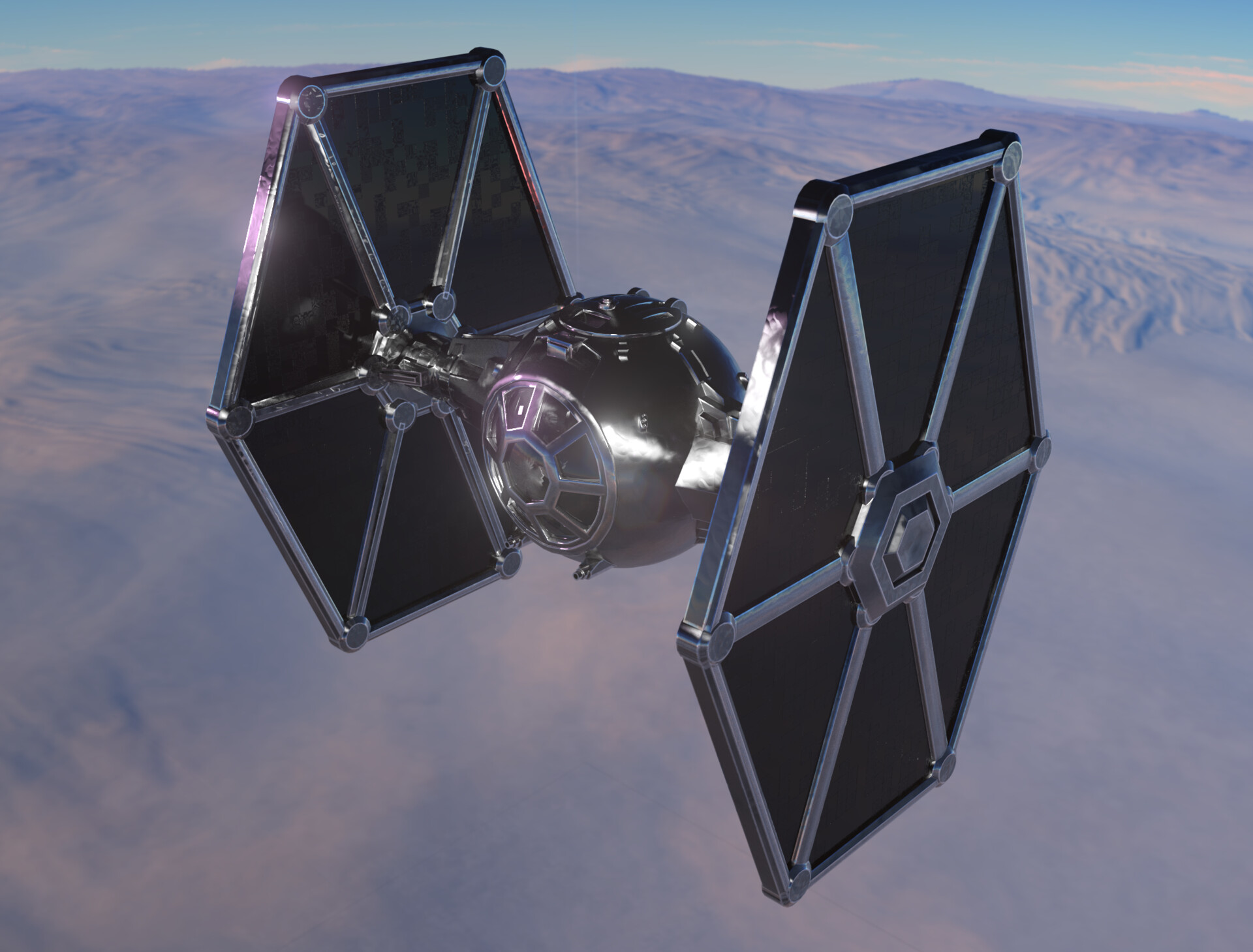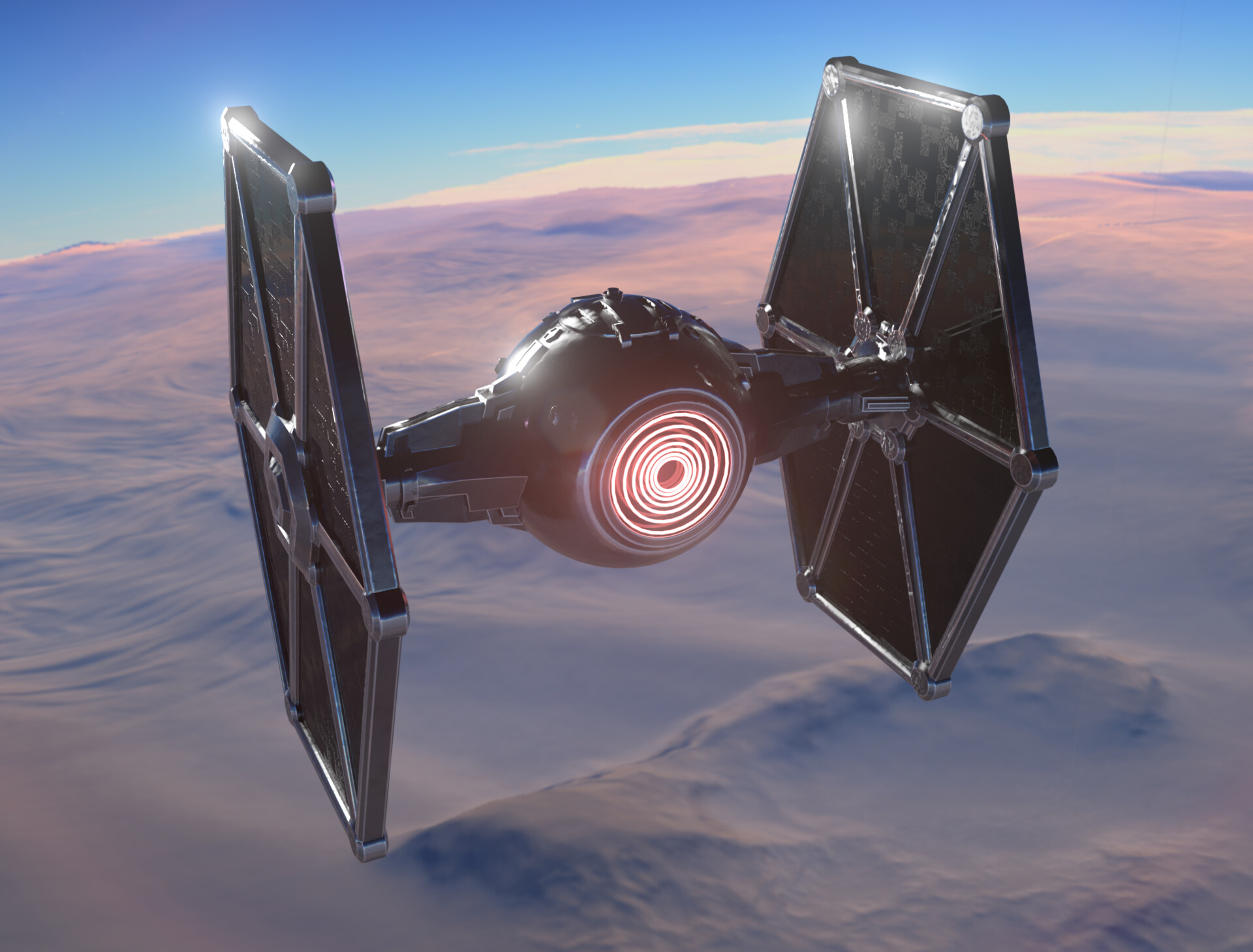Tie Fighter - Houdini
Project Overview
This project aimed to explore the capabilities of Houdini for modeling, shading, and rendering by creating a detailed Tie Fighter spacecraft. The project primarily focused on using procedural and non-procedural modeling techniques within Houdini, along with shading and rendering tasks accomplished using Redshift.
Process Details
- Modeling Techniques:
- Procedural Modeling: Leveraged Houdini’s procedural modeling capabilities to generate intricate geometric patterns and repetitive structures, such as the Tie Fighter’s paneling and surface details. Procedural methods allowed for non-destructive modifications and efficient iteration during the modeling process.
- Non-Procedural Modeling: Combined procedural techniques with traditional polygonal modeling methods to sculpt organic shapes and fine-tune intricate details, such as the spacecraft’s cockpit and engine components. This approach provided greater control over specific features while maintaining overall procedural flexibility.
- Precise Placement: Utilized Houdini’s precise placement tools to position components with accuracy, ensuring alignment and spacing of intricate parts such as wing panels and thrusters. The ability to easily manipulate and adjust object positions enhanced the overall modeling process.
- Boolean Operations: Leveraged Houdini’s robust boolean tools for complex shape creation and component integration. This allowed for the seamless merging of geometric elements and facilitated the assembly of the Tie Fighter’s distinct features.
Tie Fighter Mesh:
Full Node Graph:
Parts of Node Graph:
- Shading and Rendering:
- Redshift Integration: Integrated Redshift seamlessly into the Houdini workflow for shading and rendering tasks. Custom materials and textures were created to achieve the desired look for the Tie Fighter model, and lighting setups were optimized to enhance the visual impact of the final renders.
Renders:
- Challenges and Solutions:
- Workflow Transition: Adapting to Houdini’s node-based workflow and procedural approach presented initial challenges, particularly when recreating modeling operations commonly performed in other software like Blender. These challenges were addressed through experimentation, online resources, and the utilization of Houdini’s extensive toolset, including custom scripts and digital assets.
